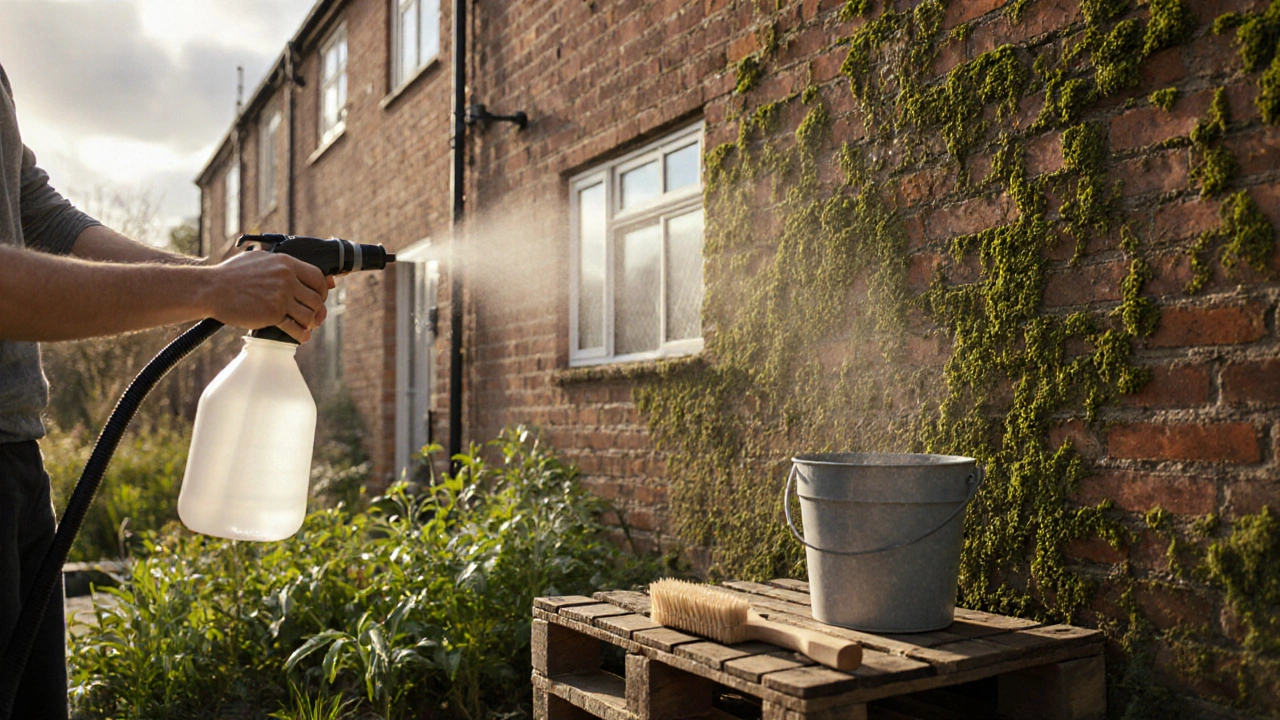Non-Toxic Exterior Cleaner: Safe, Effective Ways to Clean Your Home’s Outside
When you need to clean your driveway, siding, or patio, you don’t have to reach for harsh chemicals. A non-toxic exterior cleaner, a cleaning solution that removes dirt and grime without synthetic toxins or harmful fumes. Also known as eco-friendly outdoor cleaner, it’s the smart choice for homes with kids, pets, or nearby gardens. These cleaners work by breaking down grease, algae, and mold using natural ingredients like vinegar, baking soda, citrus extracts, or plant-based surfactants—no phosphates, chlorine, or ammonia needed.
Many people assume pressure washing is the only way to get a deep clean outside, but that’s not always true—or safe. Pressure washers can damage wood, strip paint, or force water into cracks and cause leaks. A non-toxic exterior cleaner, a cleaning solution that removes dirt and grime without synthetic toxins or harmful fumes. Also known as eco-friendly outdoor cleaner, it’s the smart choice for homes with kids, pets, or nearby gardens. works best when paired with a scrub brush and low-pressure rinse. It’s especially useful on surfaces like brick, stone, and vinyl siding where strong jets can do more harm than good. You’ll also find that many of the same ingredients used in non-toxic exterior cleaner, a cleaning solution that removes dirt and grime without synthetic toxins or harmful fumes. Also known as eco-friendly outdoor cleaner, it’s the smart choice for homes with kids, pets, or nearby gardens. are the same ones you use inside—vinegar, baking soda, castile soap—so there’s no need to buy separate products.
What about mold and mildew? They’re common on decks and fences, especially in damp climates. Commercial mold removers often contain bleach, which kills plants and can discolor surfaces. But a mix of vinegar and water, or even hydrogen peroxide and dish soap, can do the same job without the risks. These natural solutions don’t just clean—they’re safer for the environment, your lungs, and your pets. And unlike chemical cleaners that leave behind toxic residue, non-toxic options rinse away cleanly, leaving no harmful runoff.
You’ll also notice that many of the posts below focus on how to clean surfaces without damaging them. Whether it’s using vinegar on fabric sofas, baking soda on mattresses, or homemade solutions for upholstery, the same principles apply outside. The key is knowing what works, what doesn’t, and when to stop scrubbing. You don’t need expensive gear or professional equipment to get great results. Just the right mix, a little elbow grease, and the patience to let it sit.
Some people worry that natural cleaners won’t cut through heavy dirt. But studies and real-world use show that for most residential surfaces, they do—especially when used regularly. Waiting until grime builds up makes any cleaning harder, toxic or not. A quick rinse every few months with a gentle cleaner keeps your home looking fresh without the chemical load. And if you’re thinking about pressure washing, the posts here will help you understand when it’s worth it—and when it’s a risk.
Below, you’ll find real guides from people who’ve tried these methods themselves. From DIY recipes that cost less than a bottle of store-bought cleaner, to tips on avoiding damage to wood, stone, and painted surfaces, you’ll see what actually works. No fluff. No marketing hype. Just clear, tested advice for keeping your home’s exterior clean, safe, and healthy—with ingredients you already have in your pantry.

What Is the Best Thing to Wash Your House With for Eco-Friendly Results?
Discover the safest, most eco-friendly way to wash your house without harsh chemicals. Learn how vinegar, baking soda, and oxygen bleach can clean your home without harming plants, pets, or the environment.
Read More